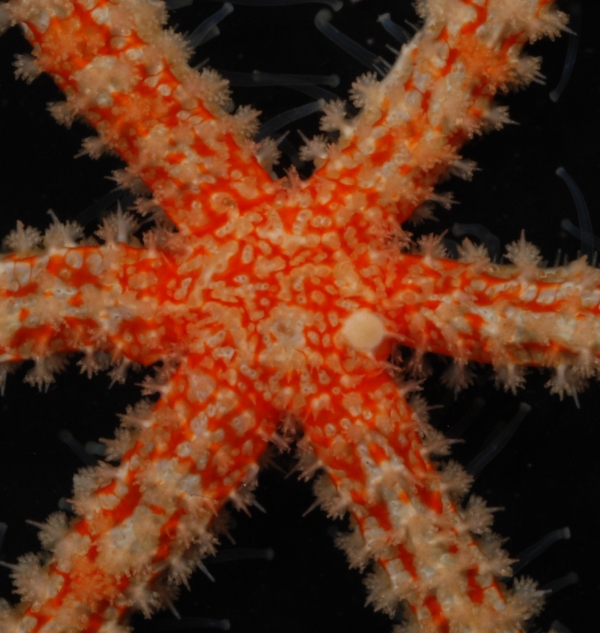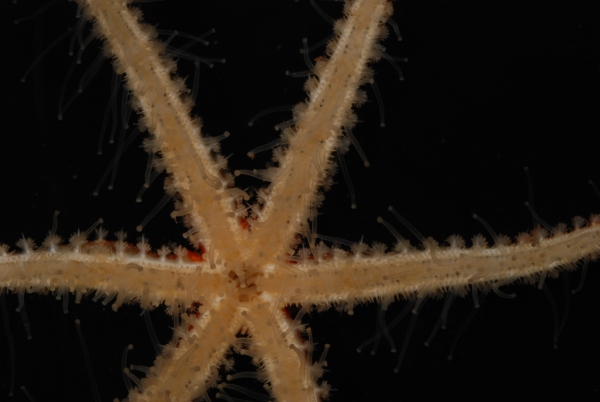On 29 September 2015 the Prime Minister of New Zealand, Rt Hon John Key, announced a new Kermadec Ocean Sanctuary stretching from Raoul Island in the north to L’Esperance Rock in the south – covering an area of 620,000 square kilometres of ocean. All forms of fishing and mining will be banned in an area 35 times larger than New Zealand’s existing 44 marine reserves.
To celebrate the announcement we wanted to showcase a Kermadec critter, one of the thousands of marine species that live there and will benefit from the protection that the ocean sanctuary will provide their home.
Coronaster reticulatus (H.L. Clark, 1916) is known from off the west coast of the North Island and is quite abundant on the active volcanoes of Kermadec Arc seamounts Rumble III and Rumble V off shore from the Bay of Plenty. This species can also be found off Tasmania, and at depths from 167-1045 m (McKnight, 2006).
This species is pretty spiny and when looked at closely you can see the wreaths of pedicellariae around the spines on its body surface. Pedicellariae are the tiny clamp or jaw like structures that can be found on the surfaces of seastars and sea urchins, and can aid in prey capture in some cases. Read our friend Chris Mah’s post from Echinoblog on the mysterious function of Pedicellariae.
Reference:
McKnight, D.G. (2006). The marine fauna of New Zealand: Asteroidea (sea-stars). 3. Orders Velatida, Spinulosida, Forcipulatida, Brisingida with addenda to Paxillosida, Valvatida. 187 p., 92 pls.
Further information on the Kermadec Ocean Sanctuary can be found on Ministry for the Environment (MfE) website.



